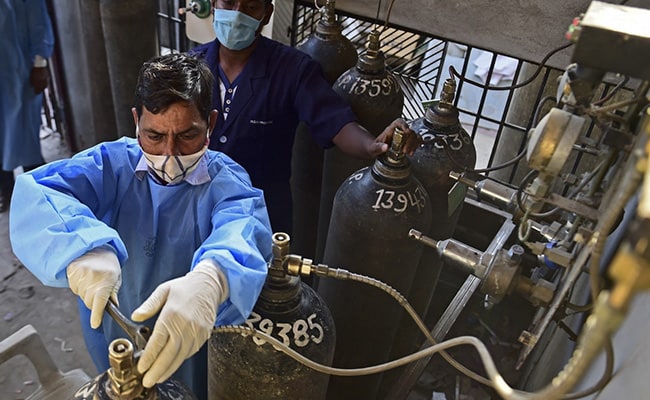[ad_1]

AIIMS chief Dr Randeep Guleria spoke to NDTV Saturday about the Covid pandemic (File)
New Delhi:
Areas with Covid positivity rates over 10 per cent must be locked down, AIIMS chief Dr Randeep Guleria told NDTV on Saturday, as the government scrambles to contain a deadly second wave that has triggered an oxygen crisis in Delhi and left India’s medical infrastructure near collapse.
Dr Guleria said the country’s healthcare system was paying the price for the government’s failure to anticipate the spread of infections via more aggressive variants of the virus and flagged the urgent need to break the chain of transmission and reduce the skyrocketing active caseload.
“To my mind we need a two-pronged attack. One – urgently work on improving healthcare infrastructure – whether hospital beds, medication or oxygen. Second – decrease the number of cases. We simply cannot continue to have such a large number of active cases…,” Dr Guleria said.
“To do this we need to look at areas with high infectivity (positivity) rates… if it is high then we need to have containment zones, even lockdown, so the chain of transmission is broken and the number of cases falls,” he explained.
“The healthcare system is paying the price for the rise in infections… saving lives is important, but we have to break the chain of transmission and bring the cases down,” he stressed.

Delhi’s oxygen crisis has made headlines for the past 72 days, with people now dying over shortage (File)
Daily Covid cases in India have exploded over the past month – from fewer than 25,000 per day in mid-March to nearly 3.5 lakh this morning. The active caseload is now over 25.5 lakh and the pressure on hospitals and medical professionals is near catastrophic.
In Delhi the oxygen crisis triggered by the rapid rise in cases has made headlines over the past 72 hours, with hospitals desperately red-flagging depleting oxygen reserves.
“It (the oxygen crisis) is desperate as far as the national capital is concerned. We need to see how to allocate resources better… there are areas in the country where there is surplus, like the eastern parts. We need to move it from there to the central states,” Dr Guleria said.

The Delhi High Court has slammed attempts to obstruct supply of oxygen (File)
The oxygen crisis – and this is an issue in other parts of the country as well – is one facet of how unprepared the country was when the second wave hit.
“We did not anticipate the rapid surge. The first wave was slower… we had time to increase everything – hospital beds, medication. This time we were caught unawares but we should have been more cautious,” Dr Guleria said, referring to the UK variant of the virus.
The UK variant – a more aggressive strain that surfaced in the southern parts of that country last year – is driving the Covid surge in Delhi. Reported cases have increased by 28 per cent from early March to around 50 per cent by the end of the month.
And that surge – over 24,000 new cases this morning – has led to stress on hospitals and the oxygen supply, as well as uncertainty amongst family members of Covid patients over medication.
An example of that uncertainty is the mad scramble for Remdesivir – an antiviral drug that the centre last week, and Dr Guleria today, have stressed is “not a life-saving drug”.
“… does not reduce deaths. There is mixed data about Remdesivir efficacy. It is therefore in the emergency-use category in India. It has side effects and thus should be given under medical supervision only,” Dr Guleria said.
Stress on medical infrastructure aside, Dr Guleria also underlined the need for suspected COVID-19 patients to get the necessary treatment. Pointing out that false negatives were possible, those showing symptoms needed to be treated even without a Covid-positive report.
“Anyone who has symptoms, or has an indicative CT, or other labs reports indicative of Covid, should be admitted in a Covid center and treated like a Covid patient,” he said, adding that AIIMS now had a ‘COVID-19 suspect ward’.
[ad_2]
Source link